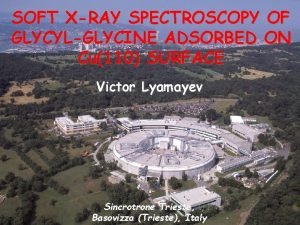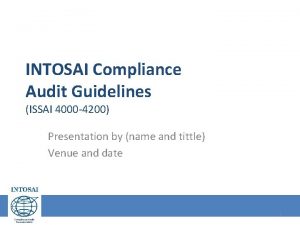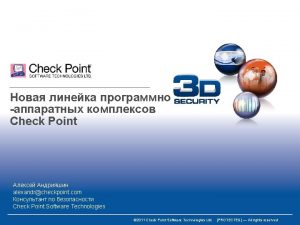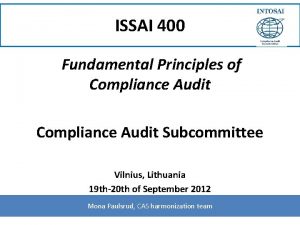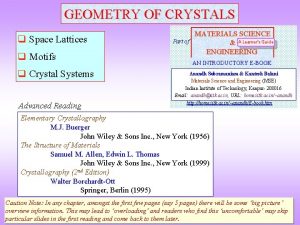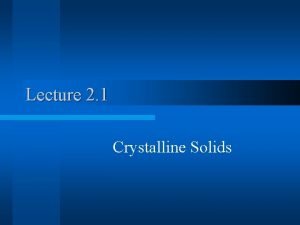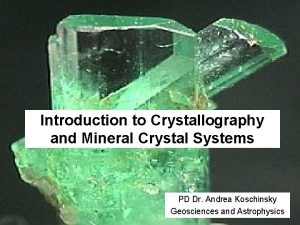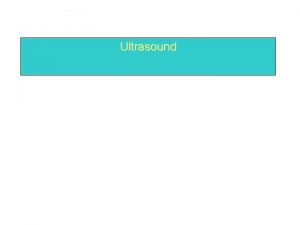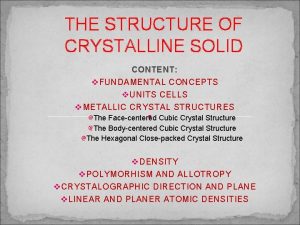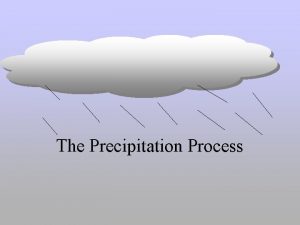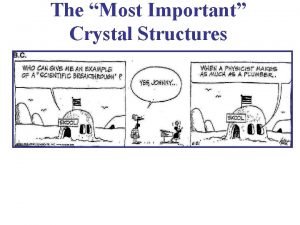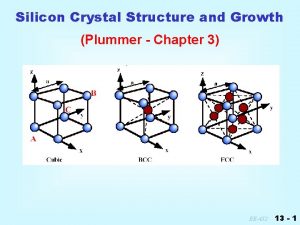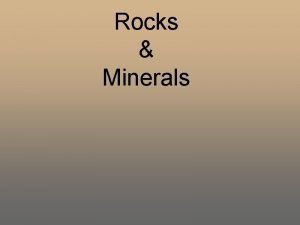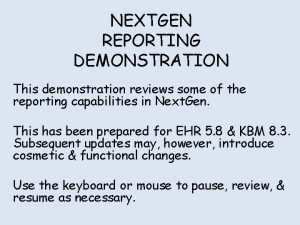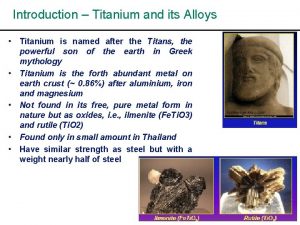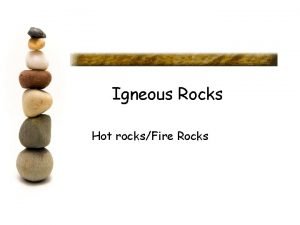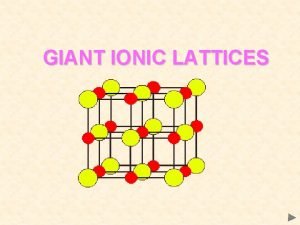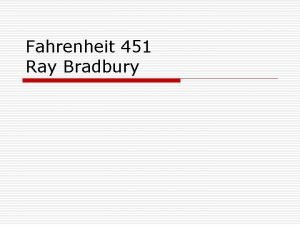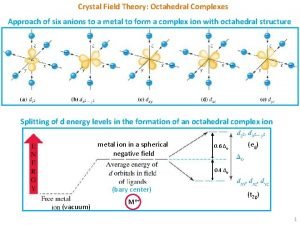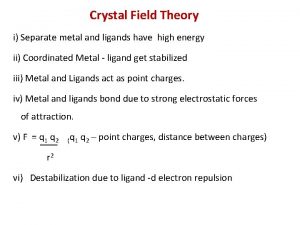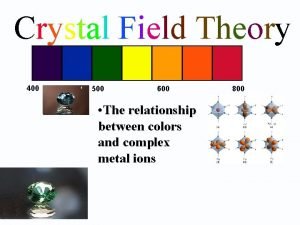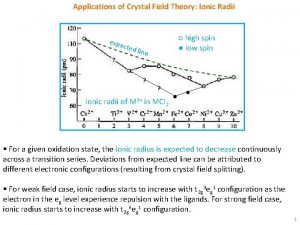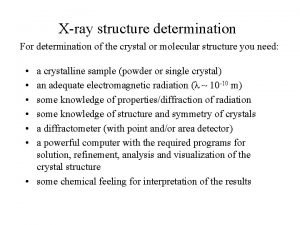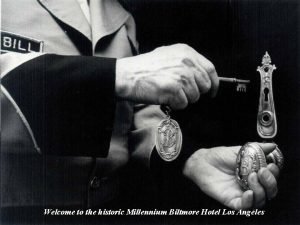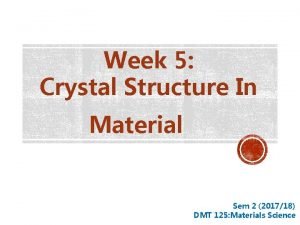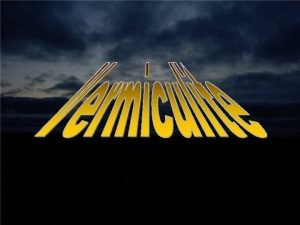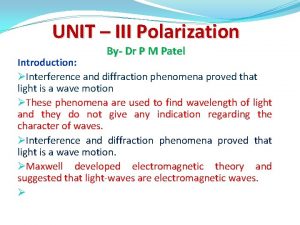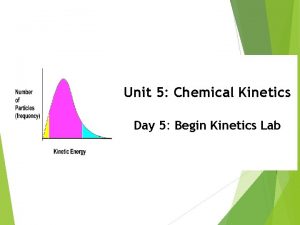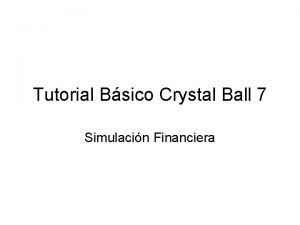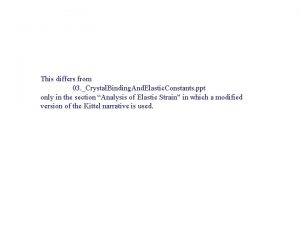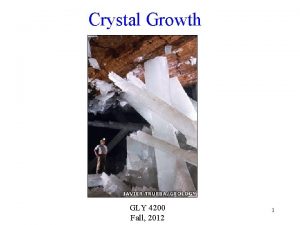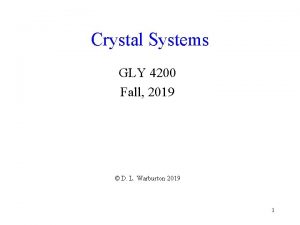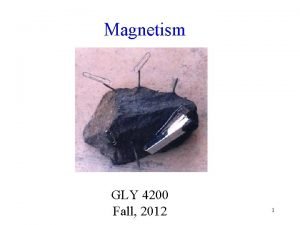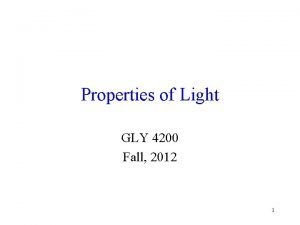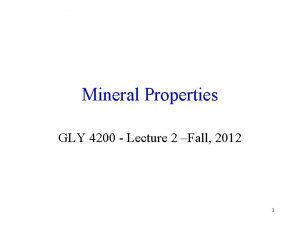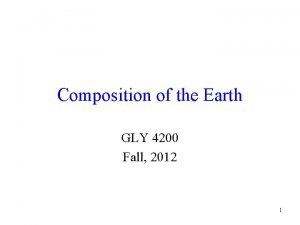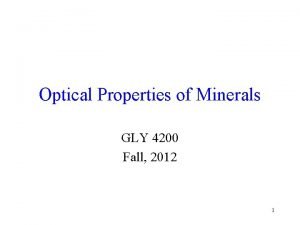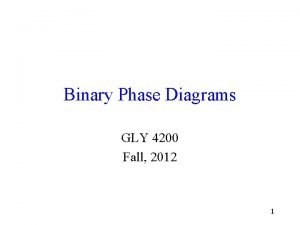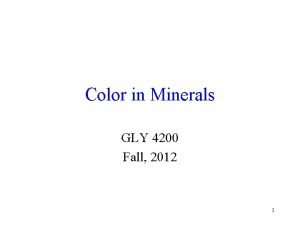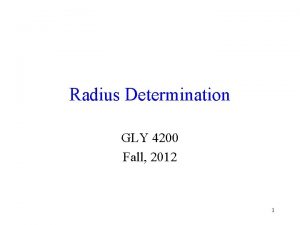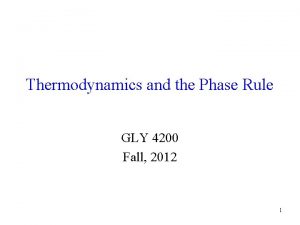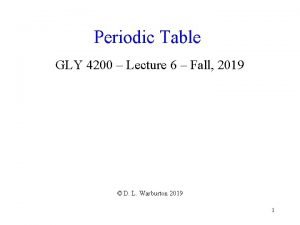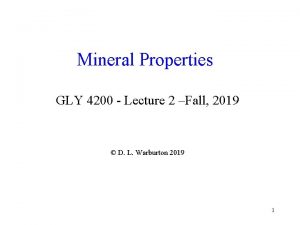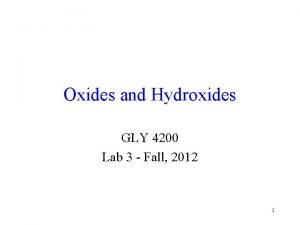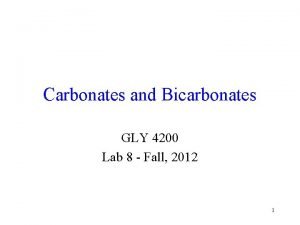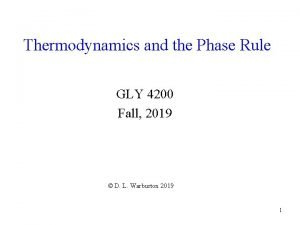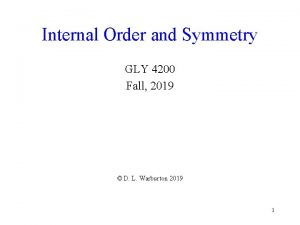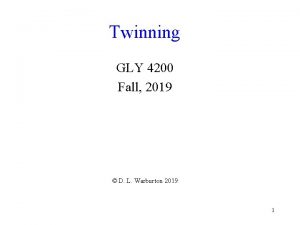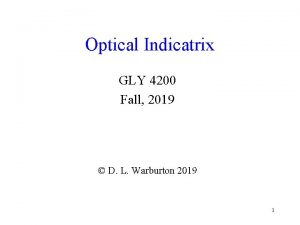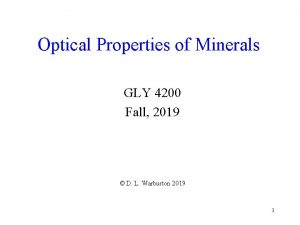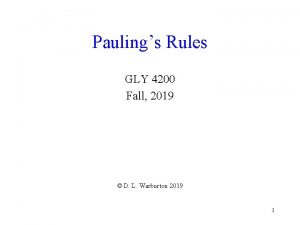Crystal Systems GLY 4200 Fall 2012 1 William


























![Zone Axis Diagram • [001] is the zone axis (100), (110), (010) and related Zone Axis Diagram • [001] is the zone axis (100), (110), (010) and related](https://slidetodoc.com/presentation_image/51b4899a3cc91f5c94b66309905a0913/image-27.jpg)

![Isometric [111] • {111} is equivalent to (111), , 29 Isometric [111] • {111} is equivalent to (111), , 29](https://slidetodoc.com/presentation_image/51b4899a3cc91f5c94b66309905a0913/image-29.jpg)































- Slides: 60

Crystal Systems GLY 4200 Fall, 2012 1

William Hallowes Miller • • 1801 -1880 British Mineralogist and Crystallographer Published Crystallography in 1838 In 1839, wrote a paper, “treatise on Crystallography” in which he introduced the concept now known as the Miller Indices 2

Notation • Lattice points are not enclosed – 100 • Lines, such as axes directions, are shown in square brackets [100] is the a axis • Direction from the origin through 102 is [102] 3

Miller Index • The points of intersection of a plane with the lattice axes are located • The reciprocals of these values are taken to obtain the Miller indices • The planes are then written in the form (h k l) where h = 1/a, k = 1/b and l = 1/c • Miller Indices are always enclosed in ( ) 4

Plane Intercepting One Axis 5

Reduction of Indices 6

Planes Parallel to One Axis 7

Isometric System • All intercepts are at distance a • Therefore (1/1, ) = (1 1 1) 8

Isometric (111) • This plane represents a layer of close packing spheres in the conventional unit cell 9

Faces of a Hexahedron • Miller Indices of cube faces 10

Faces of an Octahedron • Four of the eight faces of the octahedron 11

Faces of a Dodecahedron • Six of the twelve dodecaheral faces 12

Octahedron to Cube to Dodecahedron • Animation shows the conversion of one form to another 13

Negative Intercept • Intercepts may be along a negative axis • Symbol is a bar over the number, and is read “bar 1 0 2” 14

Miller Index from Intercepts • Let a’, b’, and c’ be the intercepts of a plane in terms of the a, b, and c vector magnitudes • Take the inverse of each intercept, then clear any fractions, and place in (hkl) format 15

Example • • • a’ = 3, b’ = 2, c’ = 4 1/3, 1/2, 1/4 Clear fractions by multiplication by twelve 4, 6, 3 Convert to (hkl) – (463) 16

Miller Index from X-ray Data • Given Halite, a = 0. 5640 nm • Given axis intercepts from X-ray data § x’ = 0. 2819 nm, y’ = 1. 128 nm, z’ = 0. 8463 nm • Calculate the intercepts in terms of the unit cell magnitude 17

Unit Cell Magnitudes • a’ = 0. 2819/0. 5640, b’ = 1. 128/0. 5640, c’ = 0. 8463/0. 5640 • a’ = 0. 4998, b’ = 2. 000, c’ = 1. 501 • Invert: 1/0. 4998, 1/2. 000, 1/1. 501 = 2, 1/2, 2/3 18

Clear Fractions • • Multiply by 6 to clear fractions 2 x 6 =12, 0. 5 x 6 = 3, 0. 6667 x 6 = 4 (12, 3, 4) Note that commas are used to separate double digit indices; otherwise, commas are not used 19

Law of Huay • Crystal faces make simple rational intercepts on crystal axes 20

Law of Bravais • Common crystal faces are parallel to lattice planes that have high lattice node density 21

Zone Axis • The intersection edge of any two non-parallel planes may be calculated from their respective Miller Indices • Crystallographic direction through the center of a crystal which is parallel to the intersection edges of the crystal faces defining the crystal zone • This is equivalent to a vector cross-product • Like vector cross-products, the order of the planes in the computation will change the result • However, since we are only interested in the 22 direction of the line, this does not matter

Generalized Zone Axis Calculation • Calculate zone axis of (hkl), (pqr) 23

Zone Axis Calculation • • • Given planes (120) , (201) 1│2 0 1 2│0 2│0 1 2 0│1 (2 x 1 - 0 x 0, 0 x 2 -1 x 1, 1 x 0 -2 x 2) = 2 -1 -4 The symbol for a zone axis is given as [uvw] • So, 24

Common Mistake • Zero x Anything is zero, not “Anything’ • Every year at least one student makes this mistake! 25

Zone Axis Calculation 2 • • • Given planes (201) , (120) 2│0 1 2 0│1 1│2 0 1 2│0 (0 x 0 -2 x 1, 1 x 1 -0 x 2, 2 x 2 -1 x 0) = -2 1 4 Zone axis is This is simply the same direction, in the opposite sense 26
![Zone Axis Diagram 001 is the zone axis 100 110 010 and related Zone Axis Diagram • [001] is the zone axis (100), (110), (010) and related](https://slidetodoc.com/presentation_image/51b4899a3cc91f5c94b66309905a0913/image-27.jpg)
Zone Axis Diagram • [001] is the zone axis (100), (110), (010) and related faces 27

Form • Classes of planes in a crystal which are symmetrically equivalent • Example the form {100} for a hexahedron is equivalent to the faces (100), (010), (001), , , 28
![Isometric 111 111 is equivalent to 111 29 Isometric [111] • {111} is equivalent to (111), , 29](https://slidetodoc.com/presentation_image/51b4899a3cc91f5c94b66309905a0913/image-29.jpg)
Isometric [111] • {111} is equivalent to (111), , 29

Closed Form – Isometric {100} • Isometric form {100} encloses space, so it is a closed form 30

Closed Form – Isometric {111} • Isometric form {111} encloses space, so it is a closed form 31

Open Forms – Tetragonal {100} and {001} • Showing the open forms {100} and {001} 32

Pedion • Open form consisting of a single face 33

Pinacoid • Open form consisting of two parallel planes • Platy specimen of wulfenite – the faces of the plates are a pinacoid 34

Benitoite • The mineral benitoite has a set of two triangular faces which form a basal pinacoid 35

Dihedron • Pair of intersecting faces related by mirror plane or twofold symmetry axis § Sphenoids - Pair of intersecting faces related by two-fold symmetry axis § Dome - Pair of intersecting faces related by mirror plane 36

Dome • Open form consisting of two intersecting planes, related by mirror symmetry • Very large gem golden topaz crystal is from Brazil and measures about 45 cm in height • Large face on right is part of a dome 37

Sphenoid • Open form consisting of two intersecting planes, related by a two-fold rotation axis • (Lower) Dark shaded triangular faces on the model shown here belong to a sphenoid • Pairs of similar vertical faces that cut the edges of the drawing are pinacoids • Top and bottom faces are two different pedions 38

Pyramids • A group of faces intersecting at a symmetry axis 39 • All pyramidal forms are open

Apophyllite Pyramid • Pyramid measures 4. 45 centimeters tall by 5. 1 centimeters wide at its base 40

Uvite • Three-sided pyramid of the mineral uvite, a type of tourmaline 41

Prisms • A prism is a set of faces that run parallel to an axes in the crystal • There can be three, four, six, eight or even twelve faces • All prismatic forms are open 42

Diprismatic Forms • Upper – Trigonal prism • Lower – Ditrigonal prism – note that the vertical axis is an A 3, not an A 6 43

Citrine Quartz • The six vertical planes are a prismatic form • This is a rare doubly terminated crystal of citrine, a variety of quartz 44

Vanadinite • Forms hexagonal prismatic crystals 45

Galena • Galena is isometric, and often forms cubic to rectangular crystals • Since all faces of the form {100} are equivalent, this is a closed form 46

Fluorite • Image shows the isometric {111} form combined with isometric {100} • Either of these would be closed forms if uncombined 47

Dipyramids • Two pyramids joined base to base along a mirror plane • All are closed forms 48

Hanksite • Tetragonal dipyramid 49

Disphenoid • A solid with four congruent triangle faces, like a distorted tetrahedron • Midpoints of edges are twofold symmetry axes • In the tetragonal disphenoid, the faces are isosceles triangles and a fourfold inversion axis joins the midpoints of the bases of the 50 isosceles triangles.

Dodecahedrons • A closed 12 -faced form • Dodecahedrons can be formed by cutting off the edges of a cube • Form symbol for a dodecahedron is isometric{110} • Garnets often display this form 51

Tetrahedron • The tetrahedron occurs in the class bar 4 3 m and has the form symbol {111}(the form shown in the drawing) or {1 bar 11} • It is a four faced form that results form three bar 4 axes and four 3 -fold axes • Tetrahedrite, a copper sulfide mineral 52

Forms Related to the Octahedron • Trapezohderon - An isometric trapezohedron is a 12 -faced closed form with the general form symbol {hhl} • The diploid is the general form {hkl} for the diploidal class (2/m bar 3) 53

Forms Related to the Octahedron • Hexoctahedron • Trigonal trisoctahedron 54

Pyritohedron • The pyritohedron is a 12 faced form that occurs in the crystal class 2/m bar 3 • The possible forms are {h 0 l} or {0 kl} and each of the faces that make up the form have 5 sides 55

Tetrahexahedron • A 24 -faced closed form with a general form symbol of {0 hl} • It is clearly related to the cube 56

Scalenohedron • A scalenohedron is a closed form with 8 or 12 faces • In ideally developed faces each of the faces is a scalene triangle • In the model, note the presence of the 3 -fold rotoinversion axis perpendicular to the 3 2 -fold axes 57

Trapezohedron • Trapezohedron are closed 6, 8, or 12 faced forms, with 3, 4, or 6 upper faces offset from 3, 4, or 6 lower faces • The trapezohedron results from 3 -, 4 -, or 6 -fold axes combined with a perpendicular 2 -fold axis • Bottom - Grossular garnet from the Kola Peninsula (size is 17 58 mm)

Rhombohedron • A rhombohedron is 6 -faced closed form wherein 3 faces on top are offset by 3 identical upside down faces on the bottom, as a result of a 3 -fold rotoinversion axis • Rhombohedrons can also result from a 3 -fold axis with perpendicular 2 -fold axes • Rhombohedrons only occur in the crystal classes bar 3 2/m , 32, and bar 3. 59

Application to the Core • From EOS, v. 90, #3, 1/20/09 60
 Optical isomerism octahedral complexes
Optical isomerism octahedral complexes Gly
Gly Gly
Gly 4200 grade pay salary in uttarakhand
4200 grade pay salary in uttarakhand Srx 4200
Srx 4200 Issai 4000
Issai 4000 Checkpoint 12600
Checkpoint 12600 Issai 4100
Issai 4100 7 crystal systems and 14 bravais lattices
7 crystal systems and 14 bravais lattices Mineral crystal systems
Mineral crystal systems Cubic void
Cubic void Crystal systems
Crystal systems Mineral crystal systems
Mineral crystal systems Decision support systems and intelligent systems
Decision support systems and intelligent systems Engineering elegant systems: theory of systems engineering
Engineering elegant systems: theory of systems engineering Embedded systems vs cyber physical systems
Embedded systems vs cyber physical systems Elegant systems
Elegant systems Structure of nacl crystal
Structure of nacl crystal Piezoelectric effect ultrasound
Piezoelectric effect ultrasound Crystal system
Crystal system Bergeron process
Bergeron process Diamond zinc blende structure
Diamond zinc blende structure Ice crystal icing
Ice crystal icing Teori medan kristal adalah
Teori medan kristal adalah Crystal method project management
Crystal method project management Crystal drive level
Crystal drive level Silicon crystal lattice
Silicon crystal lattice Sap crystal dashboards
Sap crystal dashboards Nonliving solid with crystal like properties
Nonliving solid with crystal like properties Crystal drive level
Crystal drive level Crystal hotel telupid
Crystal hotel telupid Crystal violet iodine alcohol safranin
Crystal violet iodine alcohol safranin Nextgen ehr tips and tricks
Nextgen ehr tips and tricks Sap abba
Sap abba Well son
Well son Mother to son figurative language
Mother to son figurative language Miller indices for planes
Miller indices for planes Crystal ball fortune teller
Crystal ball fortune teller What are the applications of gravimetric analysis
What are the applications of gravimetric analysis Crystal method project management
Crystal method project management Titanium crystal structure
Titanium crystal structure What are the physical properties of igneous rocks
What are the physical properties of igneous rocks Giant ionic lattices
Giant ionic lattices What is the hound in fahrenheit 451
What is the hound in fahrenheit 451 Crystal ward newham
Crystal ward newham Site:slidetodoc.com
Site:slidetodoc.com Assumption of cft
Assumption of cft What are the salient features of crystal field theory
What are the salient features of crystal field theory Crystal digital pcr
Crystal digital pcr Difference between colloidal and crystalline precipitate
Difference between colloidal and crystalline precipitate Application of crystal field theory
Application of crystal field theory X-ray structure determination
X-ray structure determination Millennium biltmore hotel deaths
Millennium biltmore hotel deaths Miller indices examples
Miller indices examples Vermiculite crystal class
Vermiculite crystal class Double refraction
Double refraction Kinetics of crystal violet fading
Kinetics of crystal violet fading Crystal ball tutorial
Crystal ball tutorial Crystal binding and elastic constants
Crystal binding and elastic constants Jim morrison crystal ship
Jim morrison crystal ship Crystal palace architecture analysis
Crystal palace architecture analysis


